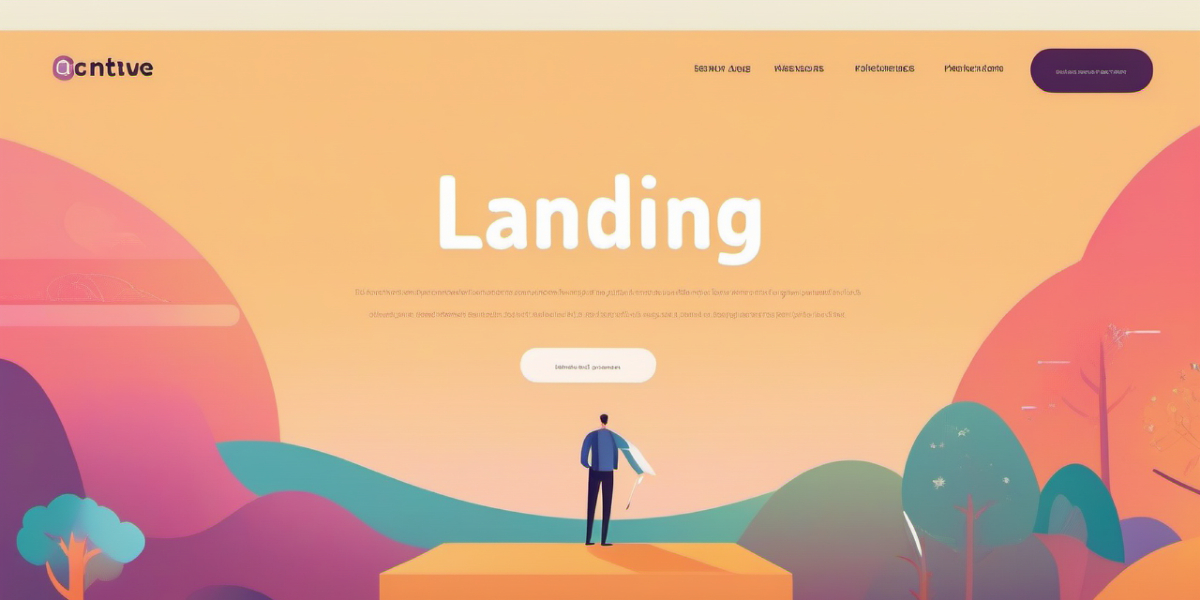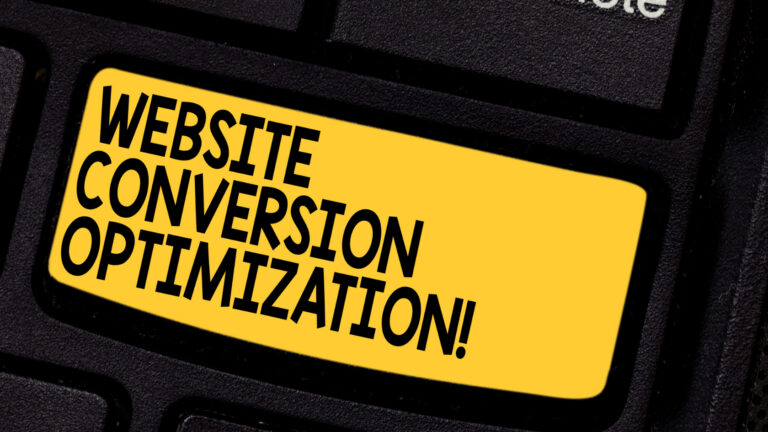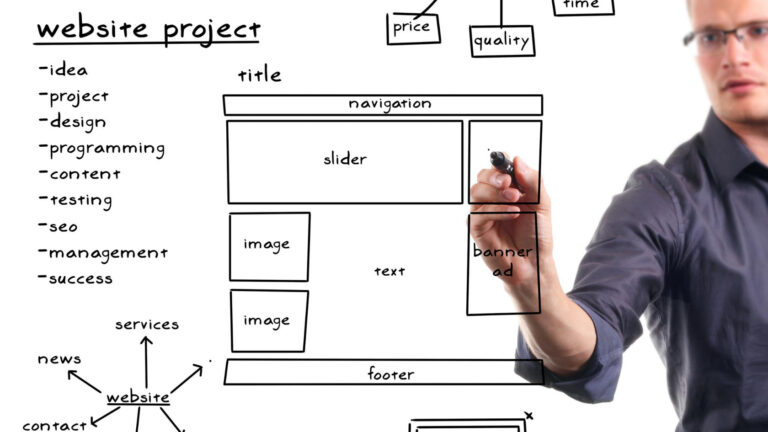
Are you ready to take control of your landing page game? Get ready to dive into the ultimate guide to top landing page practices!
Like a compass guiding you through the digital wilderness, this article will equip you with the knowledge and tools you need to create landing pages that convert.
From colour and contrast to typography and layout, we’ll cover it all.
So buckle up and get ready to transform your landing pages into conversion powerhouses.
Key Takeaways
- Colour and Contrast: Pay attention to the use of colors and contrast to make your landing page visually appealing and easy to read.
- Clear content hierarchy: Organize your content in a way that makes it easy for visitors to understand the information hierarchy and find what they are looking for.
- Call-to-Action Button Design Best Practices: Design your call-to-action buttons in a way that they are visually appealing and encourage visitors to take action.
- Importance of mobile optimization: Make sure your landing page is mobile-friendly to provide a seamless experience for mobile users and maximize conversions.
Colour and Contrast
You should always consider the importance of colour and contrast when designing landing pages. Colour psychology plays a crucial role in influencing user behaviour and evoking specific emotions.
Different colours can elicit different responses, so it’s important to choose colours that align with the desired message and branding of your landing page.
Additionally, contrast is essential for ensuring readability and accessibility. By using contrasting colors, you can make important elements stand out and guide users’ attention to key information or call-to-action buttons.
It’s also crucial to adhere to accessibility standards, ensuring that your landing page is easily perceivable by individuals with visual impairments. Consider using high contrast color combinations and providing alternative text for images.
Typography and Font Choices
Consider the role of typography and font choices in creating a visually cohesive and engaging landing page.
Font pairing is crucial in establishing the mood and tone of your page. Combining fonts that complement each other can create a harmonious and professional look.
Choose fonts that are easy to read and optimize readability. Focus on legibility and ensure that your text is clear and easy to understand. Avoid using fancy or overly decorative fonts that may distract or confuse your audience.
It’s important to strike a balance between creativity and readability. Experiment with different font sizes, weights, and styles to create a hierarchy and guide the reader’s attention.
Images and Visuals
Now it’s time to explore the power of images and visuals on your landing page.
By utilizing image optimization techniques, you can ensure that your images load quickly and enhance the overall user experience.
Additionally, understanding the importance of visual hierarchy will help you guide users’ attention and convey your message effectively.
Finally, incorporating videos strategically can engage and educate your audience, increasing the chances of conversion.
Let’s dive into these key points and discover how to make the most of images and visuals on your landing page.
Image Optimization Techniques
Optimize your images and visuals for maximum impact on your landing page. Image optimization plays a crucial role in improving your page’s performance and user experience.
One important technique is image compression, which reduces file size without compromising quality. By compressing images, you can improve page load times, which is essential for keeping visitors engaged.
Another optimization technique is alt text optimization. Alt text, or alternative text, is a description that’s displayed when an image can’t be loaded. By optimizing alt text, you provide search engines with relevant information about your images, improving their visibility in search results. Additionally, alt text optimization enhances accessibility for visually impaired users.
Implementing these image optimization techniques will help you create a visually appealing and high-performing landing page.
Visual Hierarchy Importance
Improving the visual hierarchy of your landing page is essential for guiding visitors’ attention and enhancing their overall user experience. Eye tracking studies have shown that users tend to scan a website in an F-shaped pattern, starting from the top left corner and moving horizontally across the page.
By strategically placing images and visuals within this scanning pattern, you can direct users’ attention to important elements and messages on your landing page.
Visual storytelling is an effective technique to engage users and communicate your brand message. Using compelling visuals that tell a story can capture users’ attention and create an emotional connection.
Incorporating Videos Effectively
To enhance the visual hierarchy of your landing page and further engage visitors, incorporate videos and other visual elements effectively. Videos have become a powerful tool for storytelling and engaging audiences. When using videos on your landing page, it’s important to focus on video storytelling and utilize effective video engagement techniques.
Video storytelling involves creating a compelling narrative that captures the attention of your viewers and communicates your message effectively. By using storytelling techniques such as a clear beginning, middle, and end, you can create a video that resonates with your audience and keeps them engaged.
In addition to storytelling, there are various video engagement techniques that can enhance the effectiveness of your landing page. These techniques include using attention-grabbing thumbnails, incorporating subtitles for viewers who prefer to watch videos without sound, and utilizing interactive elements such as clickable annotations or calls to action.
Layout and Organization
When it comes to the layout and organization of your landing page, there are a few key points to keep in mind.
First, having a clear content hierarchy is crucial for guiding your visitors through the page and ensuring they find what they’re looking for.
Additionally, visual appeal and flow play a big role in keeping users engaged and interested in your content.
Lastly, the placement of your call-to-action buttons can greatly impact conversion rates, so it’s important to strategically position them where they’re easily visible and accessible.
Clear Content Hierarchy
To effectively organize and structure your landing page content, start by clearly defining the hierarchy of information. The content structure and information prioritization are crucial for creating a user-friendly and engaging experience.
When designing your landing page, consider the flow of information and how it leads the user through the desired actions. Begin with a clear and attention-grabbing headline that conveys the main message. Follow it up with a concise and compelling subheading that provides additional context.
Break down your content into sections using headings and subheadings to make it easily scannable. Use bullet points or numbered lists to present key points or features.
Remember to place important information above the fold, where it’s immediately visible without scrolling.
Visual Appeal and Flow
Now, let’s delve into the visual appeal and flow of your landing page, focusing on its layout and organization.
The design elements of your landing page play a crucial role in creating a positive user experience. A well-designed layout helps guide your visitors through the page, ensuring they find the information they’re looking for easily.
Start by considering the visual hierarchy of your page. Use contrasting colors, size variations, and white space strategically to highlight important elements and create a sense of order.
Organize your content in a logical and intuitive manner, ensuring that it flows naturally from top to bottom and left to right. Use headings, subheadings, and bullet points to break up text and make it easier to scan.
Call-To-Action Placement
Optimize the effectiveness of your landing page by strategically placing your call-to-action for maximum impact.
When it comes to call-to-action placement, two key factors to consider are button design and button placement.
The design of your button should be visually appealing and attention-grabbing. Use contrasting colours that stand out from the rest of the page and make sure the button is large enough to be easily clickable.
Additionally, the placement of your call-to-action button is crucial. It should be located above the fold, meaning it should be visible without scrolling down the page. Consider placing it in a prominent position, such as the centre or the top right corner.
Call-to-Action Buttons
When creating a landing page, make sure to include an attention-grabbing call-to-action button. A well-designed button can significantly impact your conversion rates and ultimately drive more leads and sales.
To optimize your call-to-action button, consider the following button design best practices.
First, choose a colour that stands out from the rest of your page but still aligns with your brand. Use contrasting colours to make the button visually appealing and easy to spot.
Second, make sure the button is large enough to be easily clickable on both desktop and mobile devices.
Third, use clear and concise text on the button that clearly communicates the action you want users to take.
Mobile Responsiveness
Ensure your landing page is mobile responsive for optimal user experience. In today’s digital age, more and more people are accessing websites and landing pages through their smartphones and tablets. Therefore, it’s crucial to design your landing page with mobile first design principles in mind.
By doing so, you can ensure that your page adapts seamlessly to different screen sizes and resolutions, providing a smooth and enjoyable user experience. Mobile responsiveness not only improves user satisfaction but also boosts your chances of converting visitors into leads or customers.
To optimize user experience, focus on elements like font size, button placement, and image optimization. Test your landing page on various devices to ensure it’s visually appealing and functional across all platforms.
Incorporating user experience optimization and following mobile first design principles will greatly enhance the success of your landing page.
How Can I Implement the Top Practices for Optimizing Landing Pages in Your Ultimate Guide?
In your Ultimate Guide, learn how to implement the top landing page optimization practices to enhance user experience and boost conversion rates. By focusing on elements like clear value proposition, compelling CTA, and mobile responsiveness, you can create high-performing landing pages that drive results for your business.
Final Thoughts
Mastering the top landing page practices is crucial for achieving optimal results.
By carefully selecting colours and contrasting elements, choosing the right typography and fonts, incorporating captivating images and visuals, organizing the layout effectively, and utilizing compelling call-to-action buttons, you can create a landing page that captures attention and drives conversions.
- How to Plan a Content Calendar That Works - 29/10/2025
- SEO Content vs. Social Media Content: What’s the Difference? - 23/10/2025
- The Best Types of Content for Service Businesses - 16/10/2025


